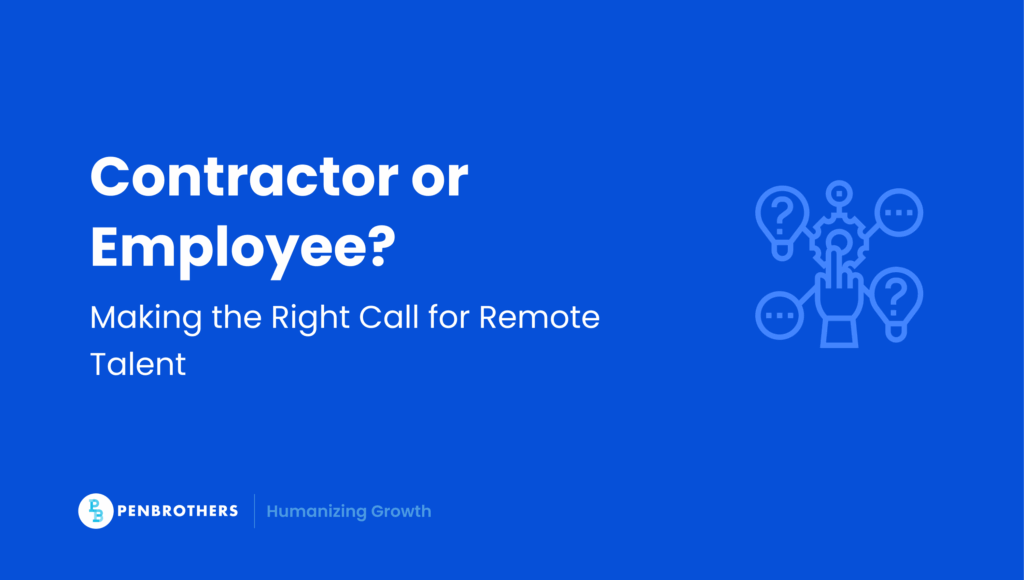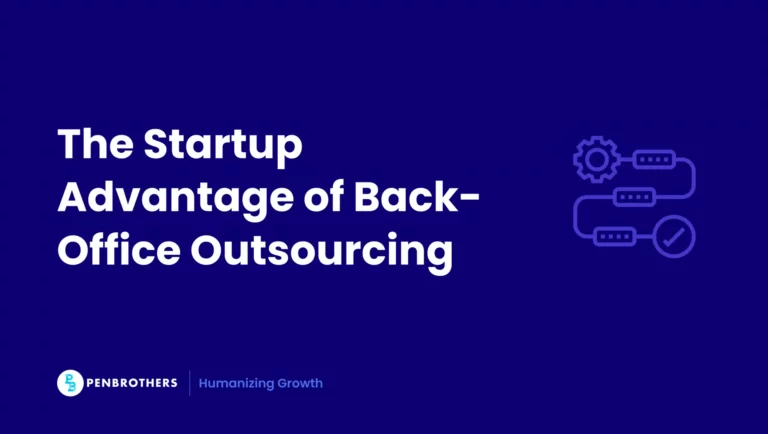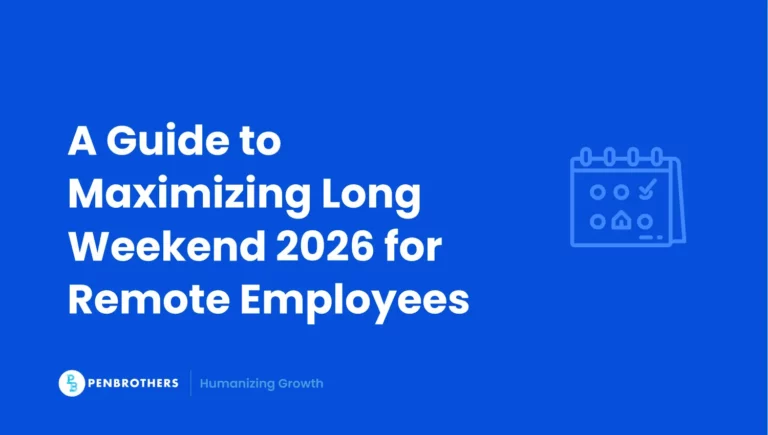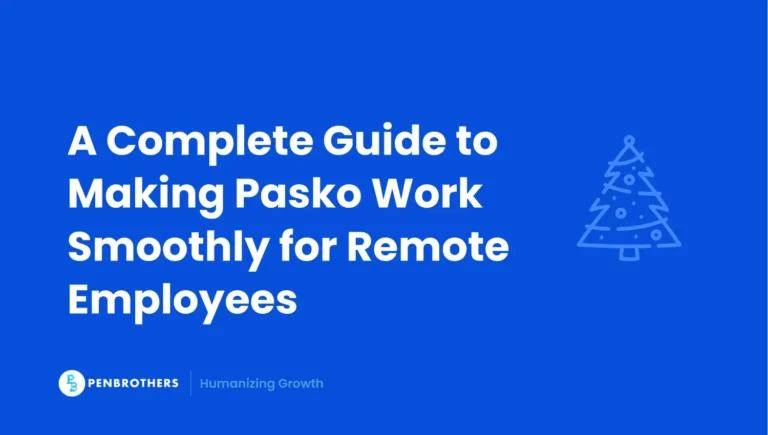Remote work isn’t a trend anymore. It’s a standard strategy for global businesses looking to scale smarter and faster. As companies break past geographic limitations, one of the most important decisions they face is how to classify their remote talent: as independent contractors or employees.
This isn’t just a legal formality. It impacts everything—from budget, compliance, and collaboration, to company culture.
At Penbrothers, we help global businesses navigate these complexities by providing offshore staffing solutions that remove the friction in remote hiring. Whether you’re considering contractors or employees, understanding the differences is the first step to hiring smarter. For companies new to remote hiring, here’s a guide to offshoring myths you should stop believing.
Key Takeaways
- A Strategic Decision with Major Legal Implications: The choice between hiring a contractor versus an employee for remote talent is a critical strategic decision, not just a hiring formality. The wrong choice can lead to significant legal and financial penalties for employee misclassification, especially under new, stricter U.S. labor rules.
- The Core Difference is Control vs. Flexibility: Independent contractors offer flexibility, speed, and lower overhead costs as they are self-employed, handle their own taxes, and are not entitled to benefits. However, the company has very little control over how or when they do their work. Employees offer higher control, team integration, and long-term loyalty, but they require a significantly higher investment in salary, benefits, and compliance.
- New U.S. Labor Rules Make Contractor Classification Riskier: The 2024 U.S. Department of Labor (DOL) final rule has made it significantly more difficult to legally classify a worker as an independent contractor. It uses a complex, six-factor “economic reality” test, amplifying the risk of misclassification penalties for companies.
- The EOR Model Solves the Compliance Dilemma: The safest and most effective way to hire a dedicated, full-time remote employee internationally is by using an Employer of Record (EOR). The EOR acts as the legal employer in the worker’s country, handling all local payroll, taxes, benefits, and labor law compliance, which removes 100% of the legal risk and administrative burden from the client company.
Independent Contractor vs Employee: What’s the Difference?
At a glance, both independent contractors and employees perform work for a company. But the way they do so—and how businesses manage them—couldn’t be more different.
Here’s a breakdown of their key differences:
| Aspect | Independent Contractor | Employee |
Legal Classification | Self-employed, works under a service contract | Hired under an employment contract |
| Control & Autonomy | High independence in how and when work is done | Follows company policies, schedule, and direct supervision |
| Compensation & Benefits | Paid per project/hour; no benefits required by employer | Receives salary and company-provided benefits |
| Tax Obligations | Handles own taxes | Employer withholds and files taxes |
| Company Integration | External partner, not deeply integrated | Embedded in team, company culture, and systems |
The classification affects everything from tax liabilities to team dynamics. Misclassifying workers can result in fines or legal issues in many jurisdictions. According to the U.S. Department of Labor, misclassification can lead to back wages, unpaid taxes, and severe penalties. This risk is now amplified by the DOL’s 2024 final rule, which introduces a more complex, six-factor “economic reality” test, making it harder to classify workers as contractors. This is why it’s crucial for scaling businesses to get it right—especially when building remote teams offshore.
This is why it’s crucial for scaling businesses to get it right—especially when building remote teams offshore.
Pros and Cons of Hiring Independent Contractors
Pros:
- Cost Efficiency: : No benefits, no payroll taxes, and fewer admin responsibilities.This makes contractors an appealing option for startups or SMEs watching their budgets. Businesses also avoid the overhead costs of onboarding, equipment, and long-term HR obligations.
- Flexibility: Ideal for project-based work or fluctuating workloads. You can scale up or down depending on your business needs without the complexity of employment contracts. This is particularly useful in industries with seasonal or irregular demand.
- Speed: Quick to onboard; great for urgent or one-off tasks. Contractors often have their tools, workflows, and experience ready to go. There’s less need for formal training, allowing businesses to hit the ground running.
- Specialized Skills: Access to expert talent without long-term commitment. This is valuable for roles requiring niche expertise that isn’t needed full-time. Companies can tap into a global pool of skilled professionals for highly technical or creative tasks.
Cons:
- Less Control: Limited authority over work hours and processes. You can’t enforce specific methods or schedules, which might lead to misalignment with company operations. Contractors are generally outcome-focused rather than process-driven.
- Risk of Misclassification: Especially when control resembles that of an employee. This can lead to legal consequences, such as back pay, penalties, and audits. Jurisdictions like the U.S. have strict criteria that, if violated, could trigger financial and reputational damage.
- No Loyalty Guarantee: They’re free to take on other clients. This can affect consistency, availability, and quality of work if they’re juggling multiple contracts. Building long-term engagement or retention is more difficult with this setup.
- Legal Gray Areas: Varying international contractor laws can be risky without local guidance. Every country treats contractors differently in terms of taxation and labor rights. Without expert support, businesses might inadvertently breach foreign labor regulations.
At Penbrothers, we see many early-stage companies favor contractors for rapid scaling, but without proper legal support, this can backfire.
In fact, a 2023 report by Upwork revealed that 64 million Americans performed freelance work in the past year—about 38% of the U.S. workforce—with cost savings and access to specialized skills cited as top reasons companies engage contractors.
Pros and Cons of Hiring Remote Employees
Pros:
- Higher Control: Clear direction over work, output, and schedule. Employers can set expectations around processes, performance, and collaboration tools. This allows for more consistency in delivery and easier performance management.
- Team Cohesion: Stronger alignment with company goals and values. Employees are immersed in your culture, communication rhythms, and internal systems. This integration helps build loyalty, trust, and a shared mission across remote teams.
- Job Security: Attracts talent looking for stable income and benefits.
- Workers are more likely to commit to companies that provide structured employment and protections. This helps reduce turnover and boosts morale across the organization.
- Skill Development: Easier to train and grow talent long-term. Employers can create clear paths for upskilling, promotions, and succession planning. Employees are more receptive to internal training and mentorship when they feel invested in..
Cons:
- Costly: Salaries, benefits, and HR administration can add up. From healthcare and retirement plans to paid time off, the total cost of employment is significantly higher than engaging contractors. You’ll also need internal resources or partners to manage these benefits properly.
- Slower Onboarding: Employment processes are more thorough. Verifying documentation, setting up local payroll, and aligning on compliance takes time. This can delay project timelines if roles need to be filled urgently.
- Compliance Needs: Local labor laws, taxes, and payroll systems vary by country. Companies must navigate region-specific regulations like termination policies, leave entitlements, and tax filings. Without local HR infrastructure or an Employer of Record (EOR) partner, this can become a legal and operational burden.
That’s where we come in. Penbrothers helps clients hire employees compliantly and confidently through our Employer of Record (EOR) model, taking care of payroll, benefits, and all legal obligations on your behalf.
We also go a step further by minimizing the typical drawbacks of remote employment. From a transparent, no-hidden-fee flat rate pricing structure to a 30-day vetting and sourcing process that delivers fully qualified candidates fast, we make remote hiring both predictable and efficient. And when it comes to compliance, you’re covered—we handle everything from local labor laws and employment contracts to tax filings and statutory benefits, so you can stay focused on growing your business across borders.
What Do Remote Workers Prefer?
The answer isn’t universal—preferences vary based on lifestyle, priorities, and location. While many professionals in tech and creative industries prefer freelancing for its flexibility and income potential, others value job stability, benefits, and long-term growth—especially in emerging markets.
In the Philippines, the strong IT-BPM industry reflects a deep-seated preference for formal employment. The IT & Business Process Association of the Philippines (IBPAP) reported the sector grew to 1.7 million full-time employees and generated $35.9 billion in revenue in 2023. This massive, continued growth shows that structured, remote-capable roles are a cornerstone of the nation’s talent pool. Companies that offer formal employment in this market often see higher retention and performance.
What Do Companies Prefer?
Again, it depends on business needs. Here are some quick-use scenarios:
Choose contractors when:
- You need speed and specialization.
- The project is short-term.
- Budget flexibility is crucial.
Choose employees when:
- You’re building long-term capacity.
- Collaboration and company culture are key.
- You want more control and commitment.
With Penbrothers, companies can scale at their own pace—there’s no minimum headcount requirement, so they can start with just one hire. As the business stabilizes and grows, they have the flexibility to expand their team strategically without the pressure of upfront commitments. Check out how Luxclusif scaled through offshoring in the Philippines with our support.
How to Decide for Your Business
Use this checklist:
- Do you need flexibility or consistency?
- Are you equipped to handle international payroll and compliance?
- Are you hiring for strategic roles or short-term deliverables?
- How important is team integration and culture?
- Are you prepared to invest in long-term talent?
Pro Tip: Consider a hybrid model. Use contractors for specialized or urgent tasks, and employees for your core team.
With Penbrothers, you don’t have to choose blindly. We guide you through this decision based on your goals and execute the hiring, whether it’s via contractor models or full EOR employment.
Answering Key Questions on Worker Classification
The legal landscape is the most significant factor in this decision. Here are answers to the most common questions.
What is the new federal rule on independent contractors?
This is the most critical recent change for U.S. employers. In March 2024, the U.S. Department of Labor (DOL) implemented a new final rule that replaces the 2021 test for classifying workers under the Fair Labor Standards Act (FLSA).
This new rule uses a “totality-of-the-circumstances” analysis of six key “economic reality” factors. No single factor is decisive, which increases the complexity and legal risk for employers.
The six factors are:
- Opportunity for Profit or Loss: Can the worker earn more through their own managerial skill or lose money based on their own investments?
- Financial Stake and Investment: Has the worker made investments in their own equipment or materials?
- Degree of Permanence: Is the relationship indefinite (like an employee) or for a specific project with a defined end date (like a contractor)?
- Degree of Control: Who controls the performance of the work, including schedules, methods, and supervision?
- Skill and Initiative: Does the role require specialized skills, and does the worker use those skills with business-like initiative?
- Integration with the Business: How integral is the worker’s function to the employer’s core business?
For companies hiring remote talent, this rule makes it significantly more difficult to legally classify a worker as an independent contractor, amplifying the risk of misclassification.
How does the IRS determine whether someone is an independent contractor?
It is crucial to understand that the IRS uses a different test from the Department of Labor. The IRS test determines how a worker’s taxes must be handled.
The IRS groups its common-law test into three main categories to evaluate the degree of control:
- Behavioral Control: Does the company have the right to direct and control how the worker does their job? This includes providing instructions, training, or specific tools and methods.
- Financial Control: Does the company control the business aspects of the worker’s job? This includes how the worker is paid (project fee vs. regular salary), whether expenses are reimbursed, and who provides the primary tools.
- Type of Relationship: Are there written contracts or employee-type benefits (like health insurance, paid leave, or a pension plan)? What is the intended permanence of the relationship?
Navigating both the new, stricter DOL rule (for wage and hour law) and the IRS three-category test (for tax law) creates a significant compliance burden. This is precisely the problem an Employer of Record (EOR) model, like the one offered by Penbrothers, is designed to solve.
Is it better to be an employee or an independent contractor?
There is no single “better” option; the right choice depends entirely on perspective and goals.
For the Worker:
- Contractor: This path offers flexibility, autonomy, and the potential for higher hourly earnings. The trade-off is instability, no employer-provided benefits (like health insurance or paid time off), and the full responsibility of managing their own taxes and business expenses.
- Employee: This path provides stability, a predictable salary, and access to statutory benefits, healthcare, and paid leave. The trade-off is less autonomy and adherence to company schedules and processes.
For the Business:
- Contractor: Offers speed, flexibility, and lower initial overhead. This is appealing for specialized, short-term projects. The risk, however, is now extremely high due to the new DOL rule, potential misclassification penalties, and a general lack of long-term loyalty or team integration.
- Employee: Offers high control, team cohesion, and the ability to invest in long-term skill development. This is essential for building core teams and a strong company culture. The “con” is the higher cost and, most importantly, the significant compliance burden of managing international payroll, taxes, and labor laws.
This is where Penbrothers’ EOR service creates the ideal solution: you get the committed, long-term talent of a full-time employee, while we handle 100% of the compliance, payroll, and HR complexity on your behalf.
Final Thoughts
The debate of independent contractor vs employee isn’t about which is better universally. It’s about which works best for your business goals, your stage of growth, and your talent strategy.
Getting it wrong can be expensive. But getting it right? It gives you access to global talent, operational efficiency, and long-term scalability.
Let Penbrothers help you build a remote team without the guesswork. Whether you need the speed of a contractor or the commitment of an employee, we have the infrastructure, compliance knowledge, and local expertise to support you.
Frequently Asked Questions
The main difference is the level of control and the legal relationship. An employee is directly supervised by the company, follows its schedule and policies, and receives a salary and benefits. An independent contractor is self-employed, has high autonomy over how and when their work is done, is paid per project, and is responsible for their own taxes and benefits.
The pros are cost efficiency (no benefits or payroll taxes), flexibility for project-based work, and speed of hiring. The cons are a lack of control over their work process, a significant legal risk of misclassification (especially under new U.S. rules), and a lack of long-term loyalty or integration.
The pros are having high control over their work and schedule, the ability to build strong team cohesion and company culture, and the opportunity to invest in their long-term skills. The cons are the higher costs (salary, benefits, taxes) and the significant legal and administrative complexity of complying with international labor laws.
The 2024 DOL rule replaces a previous, simpler test with a more complex six-factor “economic reality” test to determine if a worker is an employee or a contractor. This new, stricter rule makes it much harder for employers to legally classify workers as independent contractors, thus increasing their risk of misclassification penalties.
An EOR is a third-party organization that acts as the full legal employer for your remote staff in their home country. It solves the “contractor vs. employee” dilemma by allowing you to hire a full-time, dedicated employee while the EOR handles 100% of the complex international payroll, tax, benefits, and labor law compliance on your behalf.






